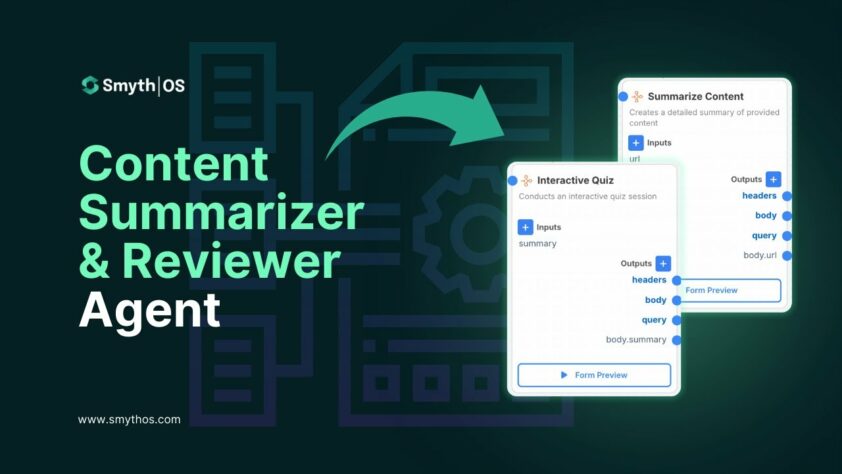Content is king, but ensuring its quality can be challenging. Enter an AI-powered content reviewer, the technology transforming digital content evaluation.
Imagine a tireless assistant that can analyze thousands of articles, social media posts, and marketing materials instantly. That’s the power of Content Reviewer AI. This technology uses artificial intelligence to streamline and enhance the content review process.
What does a content reviewer do? It acts as an automated quality control system, ensuring your digital content meets high standards. It handles tasks like grammar checks, clarity assessments, context evaluations, and tone analysis with speed and accuracy.
An AI-powered content reviewer frees human reviewers from time-consuming tasks, allowing them to focus on ensuring content accuracy, aligning with business goals, and crafting compelling narratives.
Beyond basic proofreading, content reviewers offer real-time feedback on style and clarity, providing context-specific suggestions to enhance your content. It also dives into SEO optimization, analyzing keywords and assessing readability to ensure your content performs well in search rankings.
Platforms like SmythOS take AI-powered content reviewers to the next level. By using a runtime-first architecture, SmythOS enables seamless integration of AI reviewers at scale, ensuring reliable execution in controlled environments while accessing a vast network of APIs and AI models.
The result? A content review process that’s faster, more efficient, comprehensive, and accurate.
How Do AI Reviewers Enhance Content Evaluation?
AI reviewers are changing how we evaluate content, using technologies like machine learning and natural language processing (NLP) for efficient and accurate analysis. These systems transform industries from education to public service, blending human-like assessment with AI’s processing power.
Machine learning, a subset of AI, enables systems to learn from data, identify patterns, and make decisions without explicit programming. This allows AI reviewers to improve their performance, adapting to new writing styles and evaluation criteria.
NLP empowers machines to understand human language with precision. By considering grammar, meaning, and context, NLP enables nuanced assessments beyond simple keyword matching.
Mimicking Human-like Assessment
AI reviewers can mimic human-like assessment while leveraging vast data processing capabilities. For example, Grammarly corrects grammar and offers suggestions for style, tone, and clarity, similar to a human editor.
ReviewMeta analyzes product reviews to detect potential bias or fake reviews, a task that would be time-consuming for human moderators.
In academia, Turnitin checks for plagiarism and evaluates the originality of student work, identifying not just exact matches but also paraphrased content.
Enhancing Public Services
The impact of AI reviewers extends beyond the private sector. Public services are adopting these technologies for improved efficiency and transparency. For example, the San José Digital Privacy Office uses AI for evaluating AI acquisitions, ensuring fairness and accuracy.
AI in public service demonstrates how automated review systems handle complex tasks while maintaining high standards of objectivity. By streamlining evaluation processes, AI reviewers allow human resources to focus on strategic decision-making.
Ensuring Safe and Reliable Evaluations
As AI reviewers become more prevalent, ensuring their safe and ethical use is crucial. Platforms like SmythOS ensure AI-driven content evaluations are performed within ethical boundaries.
The Smyth Runtime Environment (SRE) enhances efficiency through its multi-threaded, event-driven architecture, allowing parallel processing of multiple content items, speeding up evaluation times without compromising accuracy.
| AI Tool | Functionality | Availability | Data Classification Level |
|---|---|---|---|
| Harvard AI Sandbox | Experiment with multiple LLMs in secure environment | Access coordinated by School and Units; contact HUIT for details | Level 3 data and below |
| OpenAI ChatGPT Edu | Versatile chatbot able to generate text, code, images, and more | Access provided and coordinated by Schools and Units; contact your local IT department for details | Level 3 data and below |
| Adobe Firefly | Generate images and text effects by typing key words or a description | Available to Harvard faculty, staff, students, and researchers as part of Harvard Adobe Creative Cloud license | Level 3 data and below |
| AI Meeting Assistants | Transcribe and summarize online meetings | Approved tools as part of limited HUIT-directed pilot programs or for accessibility accommodations | See guidelines for more information about risks and availability |
We can expect more sophisticated applications across various sectors as AI review systems develop. From improving online content quality to ensuring fair public services, AI reviewers will play an increasingly crucial role.
By harnessing machine learning, NLP, and platforms like SmythOS, we’re enhancing content evaluation, making it more thorough, consistent, and insightful. These technologies promise to unlock new levels of efficiency and accuracy, benefiting creators, consumers, and decision-makers.
What are the Different Types of AI Reviewers?


Artificial intelligence is rapidly transforming content evaluation and analysis. AI reviewers are sophisticated tools designed to handle specific data types, offering tailored solutions across industries. Let’s explore the capabilities of AI reviewers.
Text Analysis Tools: The Grammar Guardians
Leading AI-powered content review tools, like Grammarly, go beyond spell-checking. They scrutinize writing for grammatical errors, assess tone and sentiment, and suggest improvements. Advanced systems detect writing style nuances, identify plagiarism, and gauge emotional impact, ensuring consistency and quality in communications.
Picture crafting an important email to a client. An AI text analyzer ensures your message strikes the right tone—professional yet approachable, confident without being overbearing. It’s like having expert editors on call.
Product Review Platforms: Separating Fact from Fiction
Online shopping relies heavily on customer reviews. AI-powered review analysis platforms, such as ReviewMeta and Fakespot, analyze user-generated content to identify fake or biased reviews. They assess writing patterns, user behavior, and review timing to spot red flags, boosting consumer confidence and maintaining review integrity.
Before making a significant purchase based on reviews, wouldn’t you appreciate knowing if those reviews were genuine or part of a coordinated campaign?
Educational Assessment Tools: Championing Academic Integrity
AI reviewers are revolutionizing academic integrity. Platforms like Turnitin detect plagiarism in student work. They identify areas needing support, highlight citation trends, and help refine teaching methods. For students, it’s a tool for understanding proper attribution and developing a unique voice.
Imagine the peace of mind knowing every paper is vetted for originality, ensuring fair play and promoting genuine learning.
Healthcare Diagnostic Reviewers: AI in the Medical Field
AI reviewers in healthcare analyze medical images, patient data, and genetic information to aid accurate diagnoses. These systems spot patterns and anomalies that might escape human eyes, potentially catching diseases early. From identifying tumors in x-rays to predicting outcomes, the potential for improved patient care is vast.
Envision a world where annual check-ups include an AI review of your health data, catching issues before they become serious.
Image Analysis Tools: Seeing Beyond the Surface
AI-powered image analysis tools interpret visual content with remarkable accuracy. They identify objects and people, understand complex scenes, and detect emotions. For businesses, this offers insights into consumer behavior. For security, it enhances surveillance. In art and photography, AI analysis provides critiques and suggestions.
Imagine uploading vacation photos and having AI organize them, provide landmark insights, and suggest composition enhancements. It’s like having a professional photographer and art critic as an assistant.
The Future of AI Reviewers: SmythOS and Beyond
AI reviewers are constantly evolving. Platforms like SmythOS push boundaries with visual workflow builders and no-code interfaces, empowering users to create custom AI reviewers. Access to AI models and APIs democratizes AI technology, allowing businesses to harness custom AI reviewers tailored to their needs.
The future of AI reviewers promises more accurate, efficient, and versatile tools across sectors, reshaping content interaction and evaluation in our digital world.
What are the Ethical Considerations and Future Implications of AI Content Review?


Artificial intelligence is transforming content review processes, raising important ethical questions, especially in the public sector. The San José Digital Privacy Office has established eight guiding principles for ethical AI use: reliability, transparency, equity, accountability, human-centered design, privacy, security, and workforce empowerment. These principles ensure that AI reviewers respect human rights and build public trust.
One tool exemplifying this ethical commitment is the VendorAI FactSheet. Used by the Digital Privacy Office, it acts as a comprehensive risk assessment tool, evaluating the benefits and drawbacks of AI systems in public services. Such rigorous vetting helps government agencies make informed AI integration decisions, balancing technological progress with societal well-being.
Service delivery is shifting rapidly due to advancements in machine learning and AI. We’re seeing a move towards hyper-personalized experiences, where AI predicts user needs and implements automated quality control at scale, enhancing efficiency and user satisfaction in public services.
Ethical Considerations in AI Content Review
As we embrace AI in content review, several ethical considerations demand attention:
- Bias Mitigation: Ensuring AI doesn’t perpetuate societal biases in content moderation.
- Privacy Protection: Balancing data needs with privacy rights.
- Transparency in Decision-Making: Making AI processes understandable to the public.
- Human Oversight: Determining human intervention levels in AI content review.
- Accountability Frameworks: Establishing responsibility when AI makes errors.
The intersection of AI and human creativity in content review presents a new frontier. As AI improves in analyzing content, human reviewers can focus on nuanced decision-making and policy development. This synergy could lead to more effective content moderation practices.
Looking ahead, ethical AI use in content review will shape public trust in digital platforms and government services. As AI systems become more prevalent, transparency and public dialogue about their implications will be crucial. The challenge lies in harnessing AI’s transformative potential while upholding ethical standards and societal values.
Conclusion: The Future of Content Review with AI


AI is dramatically changing the content review landscape, enhancing efficiency and transforming processes. Traditional manual checks are becoming obsolete, replaced by AI-powered tools that offer accuracy, consistency, and real-time feedback.
Content creators now receive instant insights, enabling them to refine their work quickly. This transformation allows human reviewers to focus on tasks requiring creativity and strategic thinking.
However, the integration of AI brings ethical challenges. Ensuring AI systems remain unbiased and maintaining a human touch in automated processes are critical considerations.
Leading this change is SmythOS, a platform that empowers organizations with AI agents that act as collaborators in content creation. SmythOS emphasizes safety and ethical use through constrained alignment, offering scalable and precise solutions.
The platform’s no-code environment democratizes access to AI, enabling organizations of all sizes to leverage its capabilities. The fusion of human expertise with AI will enhance product quality and user experiences, setting new standards in digital content.
As AI evolves, so will content review approaches. Embracing these advancements responsibly will lead to a convergence of quality, efficiency, and innovation. The future of content review, powered by AI, is here. Are you ready to join this revolution?
